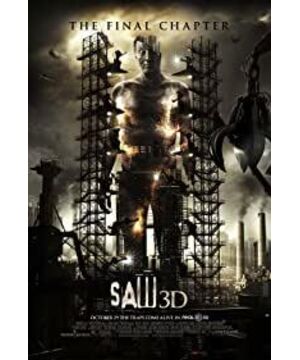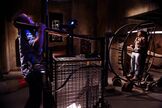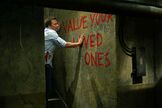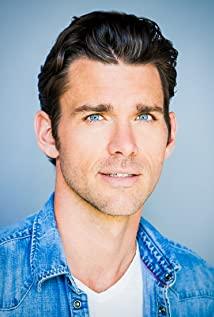Keywords: Constructivism, Machine Aesthetics, Installation Art, Performance Art, Conceptual Art, Symbolic Forest, Violent Aesthetics A look at
the "saw" series, each one reflects the meaning of constructivism, and every time there are dangers and institutions The Destiny Room has both an architectural function and an installation artwork. Its ground, ceiling, walls, mechanical devices, receptors and observers together form a spatial environment rich in composition.
The initiator of these artworks, John, has a passion for artistic creation. From the very beginning, he pursued the "abstract and simplification" of artistic creation, in line with machine aesthetics, which emphasizes the logical relationship between function and form, and opposes additional decoration; and emphasizes Universal applicability of installations and architectural styles, i.e. can be placed almost anywhere; and an extreme focus on the efficiency of installations and machines, emphasizing the relationship between design and economy.
John seems to pursue function first, trying to get rid of all the elements of expression, but his behaviors all reflect an expression of individuality, aiming to achieve a common pure spiritual resonance of human beings, that is, pure abstraction, so that the design is based on its uniqueness. Inherent recognizability finds a common language all over the world. After suffering the pain of bereavement and the huge blow of incurable disease, after all kinds of helplessness and reflection on the world and several unsuccessful suicides, John's heart has gotten rid of the shackles of the body and turned to pursue inner spiritual expression.
The rejection of the real world has made his spiritual experience more mature. Maybe he has already decided to let people see the rapid growth of spirituality in art.
What he wants to express is some kind of special feeling rather than the real reality, it is the "pure reality" hidden under the natural objects. The natural objects are different, but have the same essence inside. John's task is to organize the device and the subject. The body reveals universal commonality. Its artistic purpose is to achieve harmony and balance, and to express the cosmic force deep in the human mind.
Functionally, his installations are not comfortable for the recipient, as they were designed to be, but the simple forms of these installations have a Gothic industrial aesthetic. He emphasizes the combination of art and technology, and has a strong social functionalist stance.
At the same time, this is also a feast of violent aesthetics. The film pays attention to the formal sense of the scene, and shows the formal beauty in the scene to the extreme. Not only that, it also pays attention to and strengthens its social and moral functions. Using post-modern techniques, the test and imprisonment of people by devices and machines are symbolized as visual and auditory aesthetic elements closely related to the content of the film. In addition, the treatment of the bloody scene shows its aggressive tendencies, directly showing the violent process and bloody effects, and rendering the sensory stimulation of violence. Such aesthetic value and social effect.
View more about Saw: The Final Chapter reviews











